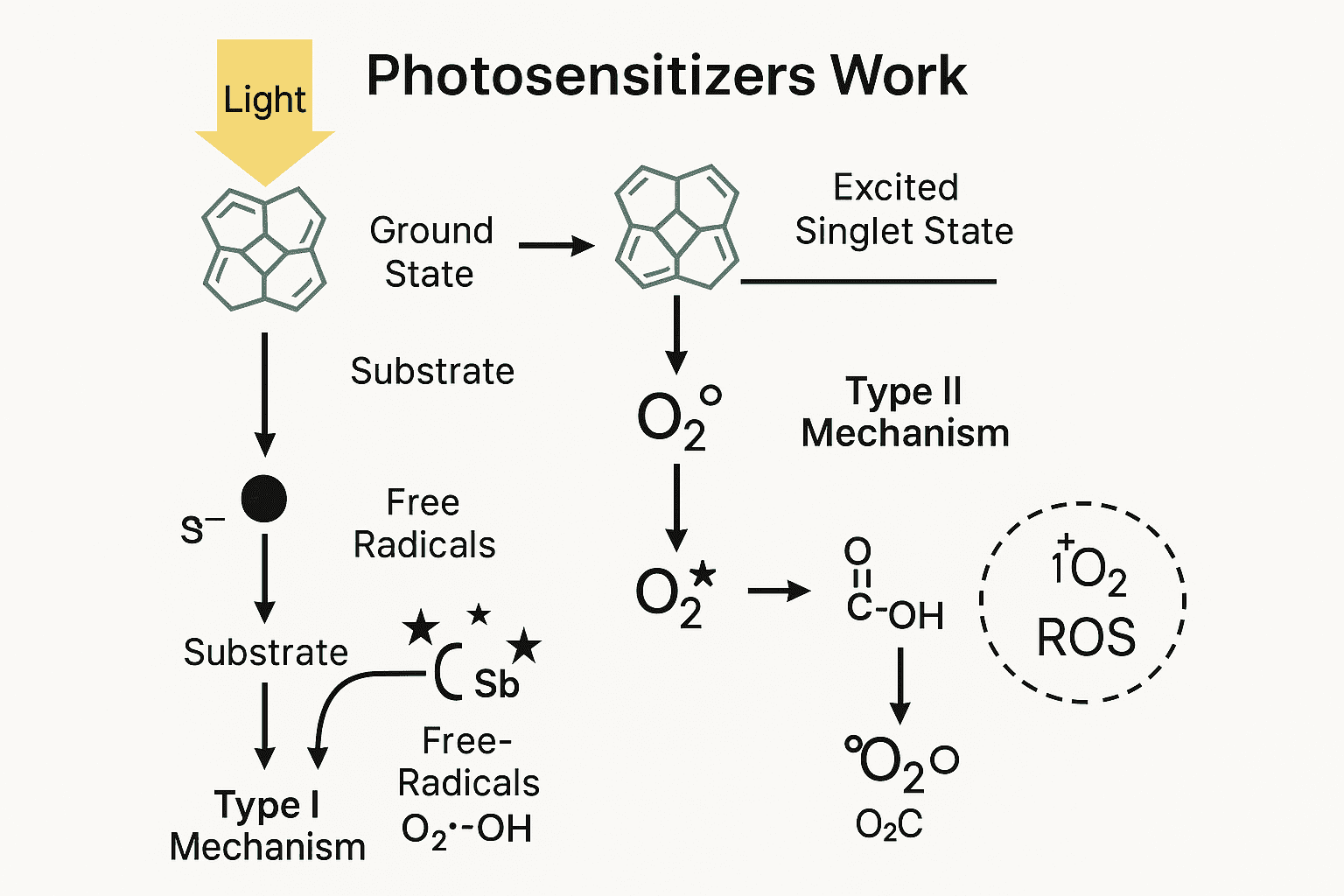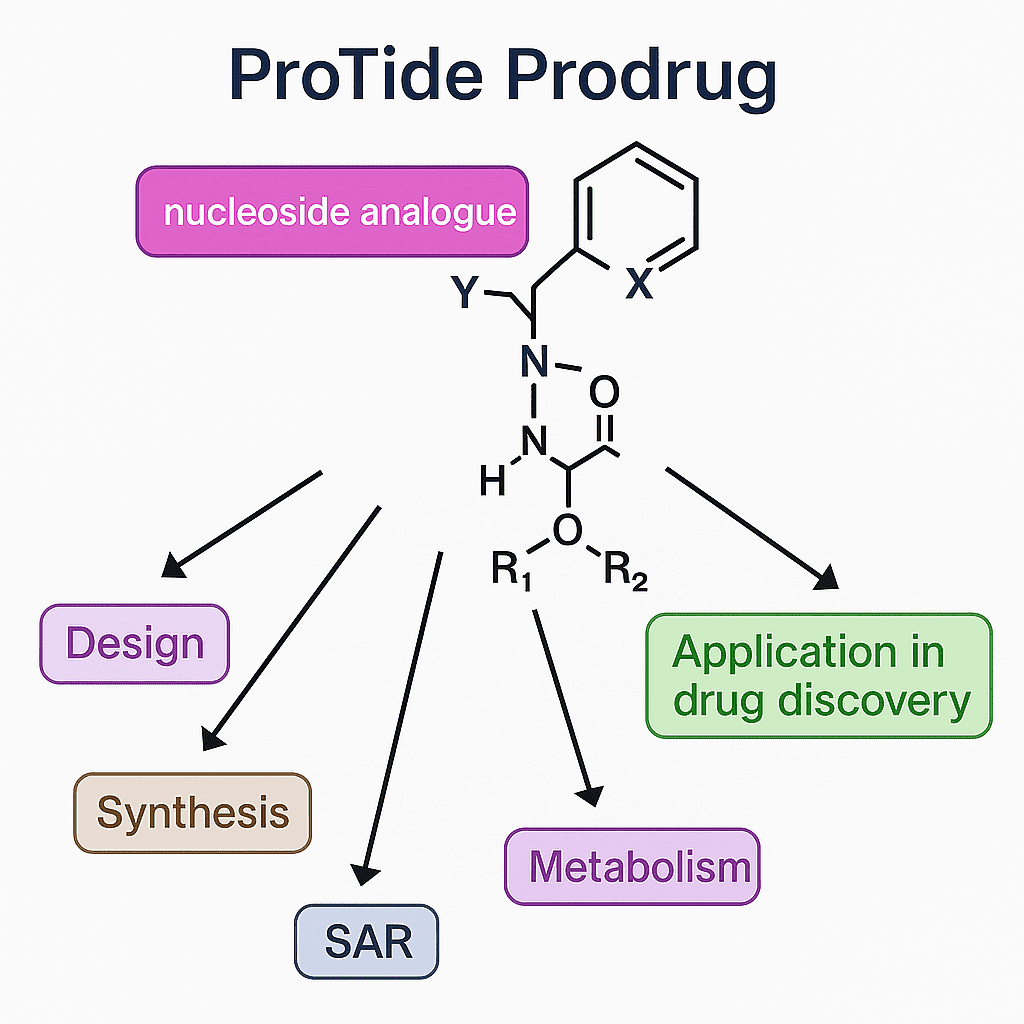Exploring the New Horizons of Celecoxib Repurposing
Abstract
Celecoxib, a widely used non-steroidal anti-inflammatory drug (NSAID), has shown promise in several new therapeutic areas beyond its initial use for pain and inflammation management. Through the process of drug repurposing, celecoxib is being investigated for its potential in metronomic cancer therapy, treatment of mental disorders, antimicrobial activity, and management of viral infections, including COVID-19. This blog post explores the evolving landscape of celecoxib repurposing, summarizing recent studies and clinical trials that highlight its diverse pharmacological properties. Additionally, the availability of related compounds such as celecoxib impurities, metabolites, isotope-labeled compounds, and building blocks is discussed, emphasizing their importance in advancing research and development. By leveraging the established safety and pharmacokinetic profiles of celecoxib, researchers aim to develop new therapeutic strategies that address unmet medical needs, reduce development costs, and accelerate the delivery of effective treatments to patients. The exploration of celecoxib’s multifaceted potential underscores the significance of drug repurposing in modern medicine and its potential to enhance patient outcomes across various medical conditions.
Introduction
Celecoxib, a well-known non-steroidal anti-inflammatory drug (NSAID), has been widely used for its effectiveness in reducing pain and inflammation. Marketed under the brand name Celebrex, this drug selectively inhibits the enzyme cyclooxygenase-2 (COX-2), which plays a crucial role in the inflammatory process. Due to its targeted action, celecoxib provides relief from various conditions such as osteoarthritis and rheumatoid arthritis with fewer gastrointestinal side effects compared to traditional NSAIDs.
In recent years, the concept of drug repurposing has gained significant attention within the pharmaceutical industry. Drug repurposing, also known as drug repositioning, involves finding new therapeutic uses for existing drugs. This strategy is particularly advantageous as it leverages the existing safety and pharmacokinetic profiles of known drugs, thereby reducing the time and cost associated with drug development. Celecoxib has emerged as a promising candidate for repurposing, with researchers exploring its potential beyond traditional applications.
The exploration of new therapeutic horizons for celecoxib highlights its potential in metronomic cancer therapy, treatment of mental disorders, antimicrobial activity, and management of viral infections such as COVID-19. By summarizing recent studies and clinical trials, the evolving landscape of celecoxib repurposing and its implications for improving patient outcomes come into focus. Additionally, we can supply related products for research use, including celecoxib impurities, metabolites, isotope-labeled compounds, and building blocks, which are essential for advancing research and development in this field.
What is Celecoxib?
Celecoxib is a non-steroidal anti-inflammatory drug (NSAID) that is widely recognized for its effectiveness in reducing pain and inflammation. Marketed under the brand name Celebrex, celecoxib is primarily used to treat conditions such as osteoarthritis, rheumatoid arthritis, acute pain, and dysmenorrhea (painful menstruation). It is also used to manage the signs and symptoms of ankylosing spondylitis.

The primary mechanism of action of celecoxib involves selective inhibition of the cyclooxygenase-2 (COX-2) enzyme. COX-2 is an inducible enzyme that is typically expressed at sites of inflammation and is responsible for the conversion of arachidonic acid to prostaglandins, which are lipid compounds that mediate inflammation and pain. By selectively inhibiting COX-2, celecoxib reduces the production of prostaglandins, thereby alleviating inflammation and pain. This selectivity for COX-2 over COX-1, another isoform of the enzyme that is involved in maintaining the protective lining of the gastrointestinal tract, makes celecoxib less likely to cause gastrointestinal side effects compared to non-selective NSAIDs like ibuprofen and aspirin.
Chemically, celecoxib is a member of the diaryl-substituted pyrazole class of compounds. It is a benzenesulfonamide derivative with the chemical formula C17H14F3N3O2S. The structure of celecoxib includes a pyrazole ring that is substituted with a trifluoromethyl phenyl group and a methylphenyl group, which contribute to its COX-2 selectivity. Celecoxib exists as a crystalline solid with a melting point of approximately 160-162°C. It is poorly soluble in water, which poses challenges for its formulation and bioavailability. However, its high lipophilicity (log P value of 3.5) facilitates its absorption when administered orally.
The clinical efficacy and safety profile of celecoxib have been well-documented through numerous studies and clinical trials. Its development as a selective COX-2 inhibitor represented a significant advancement in NSAID therapy, offering patients effective pain relief with a reduced risk of gastrointestinal complications.
The Need for Drug Repurposing
Drug repurposing, also known as drug repositioning, has become an increasingly important strategy in the pharmaceutical industry. This approach involves finding new therapeutic uses for existing drugs, offering numerous advantages over traditional drug development. One of the primary benefits of drug repurposing is cost-effectiveness. Developing a new drug from scratch is an expensive and time-consuming process, often taking over a decade and costing billions of dollars. In contrast, repurposing existing drugs significantly reduces development costs and timelines because the safety, toxicity, and pharmacokinetic profiles of these drugs are already well-established.

Time-saving is another critical benefit of drug repurposing. Since repurposed drugs have already undergone extensive testing and have known safety profiles, they can bypass many of the early-phase trials required for new drugs. This allows for a quicker transition from discovery to clinical application, potentially bringing effective treatments to patients faster. Additionally, repurposing can address unmet medical needs by providing new treatment options for diseases that currently lack effective therapies.
Several notable examples of successful drug repurposing highlight the potential of this approach. Sildenafil, originally developed for angina, was repurposed as Viagra to treat erectile dysfunction. Similarly, thalidomide, once known for its teratogenic effects, has been repurposed to treat multiple myeloma and complications of leprosy. These success stories demonstrate how repurposing can provide new therapeutic options and extend the commercial lifecycle of existing drugs.
Celecoxib, a well-known non-steroidal anti-inflammatory drug (NSAID), is an excellent candidate for repurposing. Originally approved for the treatment of osteoarthritis and rheumatoid arthritis due to its selective inhibition of the COX-2 enzyme, celecoxib has shown promise in various new therapeutic areas. Research has explored its potential in metronomic cancer therapy, where it can help inhibit tumor growth and enhance the effectiveness of chemotherapy. Additionally, celecoxib’s anti-inflammatory properties have been investigated for the treatment of mental health disorders, such as depression and schizophrenia, as well as for its antimicrobial activity against resistant bacterial strains.
In summary, drug repurposing offers significant advantages in terms of cost, time, and addressing unmet medical needs. Celecoxib’s potential in new therapeutic areas exemplifies the benefits of this strategy, highlighting the importance of ongoing research to discover new uses for existing drugs.
New Therapeutic Targets for Celecoxib
Celecoxib, initially approved for its anti-inflammatory and analgesic properties in conditions like osteoarthritis and rheumatoid arthritis, has shown promising potential in several new therapeutic areas. These include metronomic cancer therapy, treatment of mental disorders, antimicrobial activity, and management of viral infections such as COVID-19. This section explores these emerging uses of celecoxib, highlighting research findings and clinical trial results.
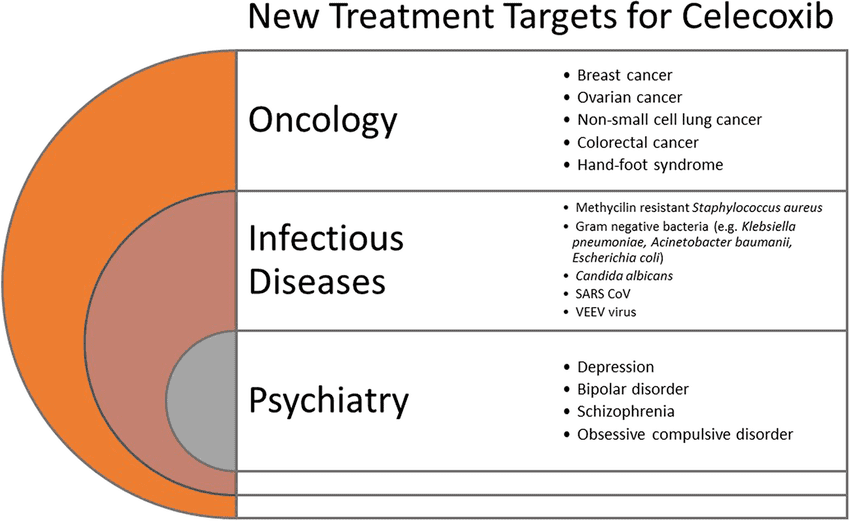
Metronomic Cancer Therapy
Metronomic chemotherapy involves the administration of low doses of chemotherapeutic drugs at regular, frequent intervals with minimal or no drug-free breaks. This approach contrasts with the conventional high-dose chemotherapy regimens and aims to minimize toxicity while inhibiting tumor growth and angiogenesis. Celecoxib has gained attention in this therapeutic context due to its anti-angiogenic and anti-inflammatory properties.
Celecoxib’s role in metronomic cancer therapy is supported by its ability to inhibit the COX-2 enzyme, which is often overexpressed in various tumors and associated with poor prognosis. COX-2 inhibition by celecoxib can reduce the production of prostaglandins that promote tumor growth and metastasis. Additionally, celecoxib can induce apoptosis and inhibit cell proliferation, making it a valuable adjunct in cancer treatment.
Several clinical trials have investigated the efficacy of celecoxib in combination with other chemotherapeutic agents. For instance, a study by Perroud et al. (2009) evaluated the combination of low-dose cyclophosphamide and celecoxib in patients with metastatic breast cancer. The study found that this combination was well-tolerated and resulted in significant clinical benefits, including prolonged time to progression and improved overall survival.
Treatment of Mental Disorders
Recent research has explored the connection between inflammation and mental health disorders, suggesting that inflammation may play a role in the pathophysiology of conditions such as depression, bipolar disorder, and schizophrenia. Elevated levels of pro-inflammatory cytokines have been observed in patients with these disorders, indicating a potential therapeutic role for anti-inflammatory agents like celecoxib.
Celecoxib’s efficacy in treating depression has been examined in several clinical trials. A meta-analysis by Nery et al. (2008) demonstrated that adjunctive therapy with celecoxib significantly improved depressive symptoms in patients with major depressive disorder. Similarly, studies have shown that celecoxib can enhance the therapeutic effects of standard antidepressants, suggesting its potential as an adjunctive treatment.
In bipolar disorder, celecoxib has been investigated as an adjunctive therapy to mood stabilizers. A study by Berk et al. (2013) found that celecoxib, when combined with valproate, significantly improved manic and depressive symptoms in patients with bipolar disorder. In schizophrenia, celecoxib has shown promise in early-phase clinical trials, particularly in reducing negative symptoms and improving cognitive function when used alongside antipsychotic medications.
Antimicrobial Activity
Celecoxib has also demonstrated potential antimicrobial activity, particularly against antibiotic-resistant bacteria. This unexpected benefit is attributed to celecoxib’s ability to disrupt bacterial cell membranes and inhibit bacterial enzymes. Studies have shown that celecoxib can enhance the efficacy of conventional antibiotics, making it a potential adjunctive therapy in the fight against resistant bacterial infections.
Research by Thangamani et al. (2015) revealed that celecoxib exhibits synergistic effects with antibiotics such as ampicillin and vancomycin against methicillin-resistant Staphylococcus aureus (MRSA). The combination of celecoxib with these antibiotics improved bacterial clearance and reduced the minimum inhibitory concentrations required, suggesting a potential role for celecoxib in overcoming antibiotic resistance.
COVID-19 and Other Viral Infections
The global COVID-19 pandemic has prompted extensive research into potential treatments for the disease, including the repurposing of existing drugs. Celecoxib has been investigated for its potential role in managing COVID-19 due to its anti-inflammatory and immunomodulatory properties. Inflammation plays a crucial role in the severe respiratory symptoms associated with COVID-19, and COX-2 inhibitors like celecoxib may help mitigate these effects.
Clinical trials have examined the use of celecoxib in COVID-19 patients. A study by NCT04325633 evaluated the safety and efficacy of celecoxib in combination with standard care for hospitalized COVID-19 patients. The results indicated that celecoxib could reduce the severity of symptoms and improve clinical outcomes by modulating the inflammatory response.
Additionally, celecoxib’s potential antiviral effects have been explored in other viral infections. For example, research has suggested that celecoxib may inhibit the replication of the Venezuelan equine encephalitis virus (VEEV) and other RNA viruses, further highlighting its potential as a versatile therapeutic agent.
Celecoxib’s diverse pharmacological properties extend beyond its original indication for pain and inflammation. The ongoing research into its new therapeutic targets, including cancer, mental disorders, antimicrobial activity, and viral infections, underscores its potential to benefit a wide range of medical conditions. Continued investigation and clinical trials will be essential to fully elucidate the scope of celecoxib’s therapeutic applications and optimize its use in these emerging areas.
Supply of Related Compounds
In the realm of pharmaceutical research and development, the availability of related compounds is crucial for comprehensive drug studies. Celecoxib, like any other drug, has several related compounds that are indispensable for various research purposes. These include celecoxib impurities, metabolites, isotope-labeled compounds, and building blocks.
Celecoxib Impurities
Celecoxib impurities are by-products that can form during the manufacturing process or through the degradation of the drug. These impurities must be identified, quantified, and controlled to ensure the safety and efficacy of the drug product. Studying these impurities helps in understanding the drug’s stability, potential side effects, and overall quality. Analytical standards of these impurities are essential for validating the methods used in drug testing and ensuring regulatory compliance.
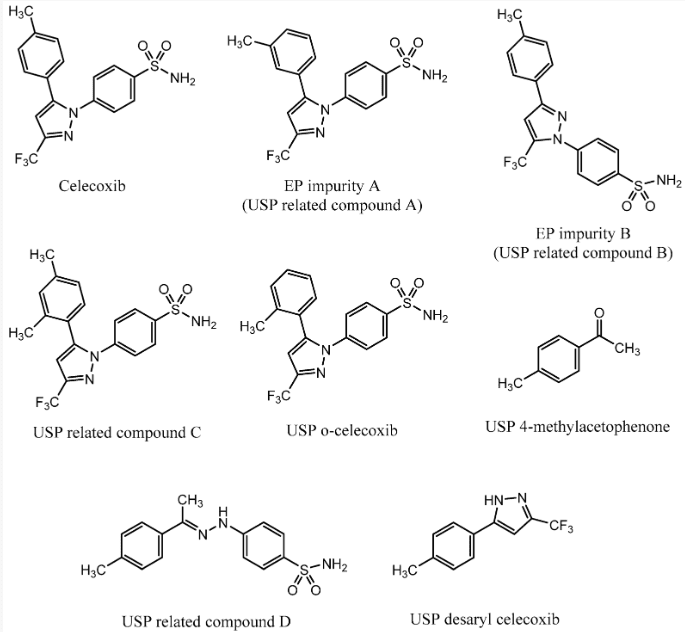
Celecoxib Metabolites
Celecoxib metabolites are the products of the drug’s metabolism within the body. Studying these metabolites is vital for pharmacokinetic and drug metabolism studies. These studies provide insights into the absorption, distribution, metabolism, and excretion (ADME) of the drug. Understanding the metabolic pathways of celecoxib helps in predicting drug interactions, potential toxicity, and the therapeutic efficacy of the drug. Researchers often require synthesized metabolites to study their biological activity and toxicological profiles.
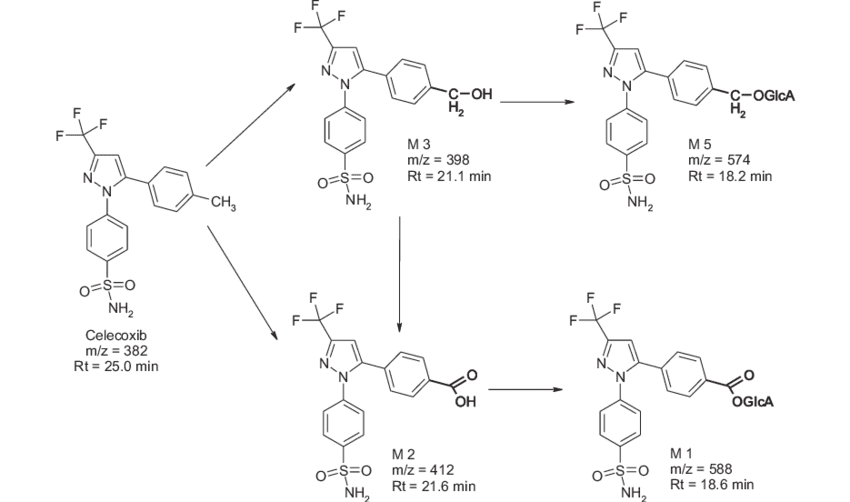
Isotope-Labeled Compounds
Isotope-labeled compounds are versions of the drug or its metabolites that contain isotopes, which can be tracked using various analytical techniques. These compounds are invaluable in tracing and analytical studies. They allow researchers to follow the drug’s pathway in biological systems precisely, aiding in detailed pharmacokinetic and dynamic studies. Isotope labeling can provide critical data on drug distribution, target engagement, and mechanism of action, enhancing the understanding of the drug’s in vivo behavior.
Building Blocks
Building blocks are essential components used in the synthesis of celecoxib and its derivatives. These chemical intermediates and precursors are crucial in medicinal chemistry for designing and developing new therapeutic agents. By modifying these building blocks, researchers can create new analogs with potentially improved pharmacological properties. Access to a wide variety of high-purity building blocks accelerates the drug development process and supports the creation of novel drug candidates.
Providing these related compounds for research use enables scientists to conduct thorough investigations into celecoxib and its potential new applications. This comprehensive approach ensures the development of safer, more effective pharmaceutical products.
Conclusion
Celecoxib, a well-established non-steroidal anti-inflammatory drug (NSAID), has demonstrated substantial potential beyond its original indications for treating pain and inflammation. Through the process of drug repurposing, celecoxib is being explored for its efficacy in metronomic cancer therapy, treatment of mental disorders, antimicrobial activity, and management of viral infections such as COVID-19. The versatility of celecoxib underscores the importance of repurposing existing drugs to address unmet medical needs, reduce development costs, and accelerate the delivery of new treatments to patients.
Moreover, the availability of related compounds, including celecoxib impurities, metabolites, isotope-labeled compounds, and building blocks, plays a critical role in advancing research and development. These related products support comprehensive drug studies, enabling scientists to thoroughly investigate celecoxib’s pharmacokinetics, metabolism, safety, and potential new applications. By providing these essential research tools, the pharmaceutical industry can continue to innovate and improve therapeutic outcomes.
The ongoing exploration of celecoxib’s new therapeutic targets highlights the dynamic nature of pharmaceutical research and the potential for existing drugs to address diverse medical challenges. As research progresses, celecoxib may emerge as a valuable treatment option in various clinical settings, further enhancing patient care and expanding the horizons of modern medicine.
Reference
- Bąk, U., & Krupa, A. (2023). Challenges and opportunities for celecoxib repurposing. Pharmaceutical Research, 40(10), 2329-2345.
- Tołoczko-Iwaniuk, N., Dziemiańczyk-Pakieła, D., Nowaszewska, B. K., Celińska-Janowicz, K., & Miltyk, W. (2019). Celecoxib in cancer therapy and prevention–review. Current Drug Targets, 20(3), 302-315.
- Rainsford, K. D. (2007). Anti-inflammatory drugs in the 21st century. Inflammation in the pathogenesis of chronic diseases: the COX-2 controversy, 3-27.


